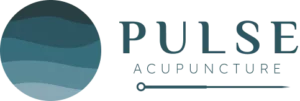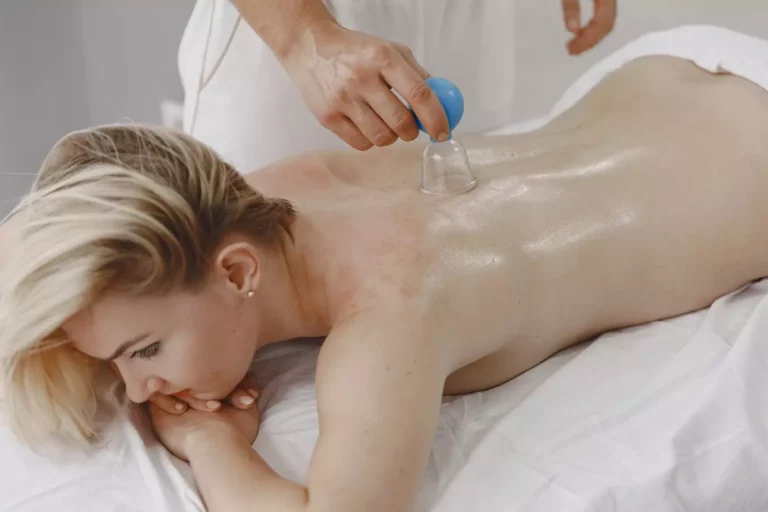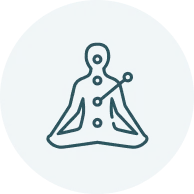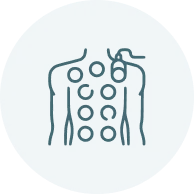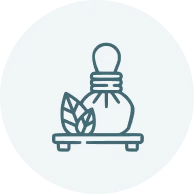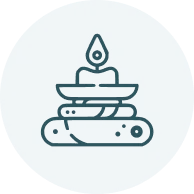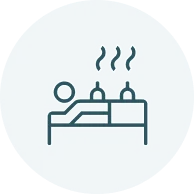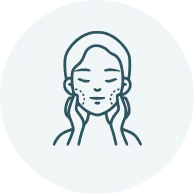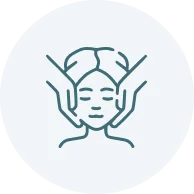Cupping therapy is an ancient form of alternative medicine that involves placing cups on the skin to create a suction effect. Cupping can be beneficial for various health conditions, though it is important to maintain a proper aftercare to ensure the best results and prevent any potential side effects. Understanding what to do and what to avoid after cupping is crucial in promoting healing and maximizing the benefits of this therapeutic practice.
Top 3 Things to Do for Cupping Aftercare
After a cupping session, it’s essential to take proper care of the treated areas to enhance the healing process and prevent any potential issues. Here are the top three things to do for cupping aftercare:
- Keep the Treated Area Clean. After cupping, it is important to keep the skin around the cupping marks clean to reduce the risk of infection. Carefully wash the area with mild soap and water and pat it dry with a clean towel. Avoid using harsh chemicals or abrasive substances on the treated skin.
- Stay Hydrated. Drink plenty of water after cupping to help flush out toxins released during the treatment and promote circulation. Proper hydration also aids in reducing the likelihood of feeling lightheaded or dizzy, which can occasionally occur after a cupping session.
- Allow Time for Healing. Cupping can leave some temporary marks on the skin. They can be light pink or even dark purple, depending on the intensity of the treatment. These marks are a normal response to the therapy and typically fade within a few days to a week. Allow the skin sufficient time to heal naturally, avoiding any vigorous rubbing or scratching of the cupping marks.
By following these essential cupping aftercare steps, you can optimize the benefits of cupping therapy and ensure a safe and effective healing process. If you experience any concerns or unusual reactions after cupping, consult with a qualified healthcare practitioner or the cupping therapist for guidance and reassurance.
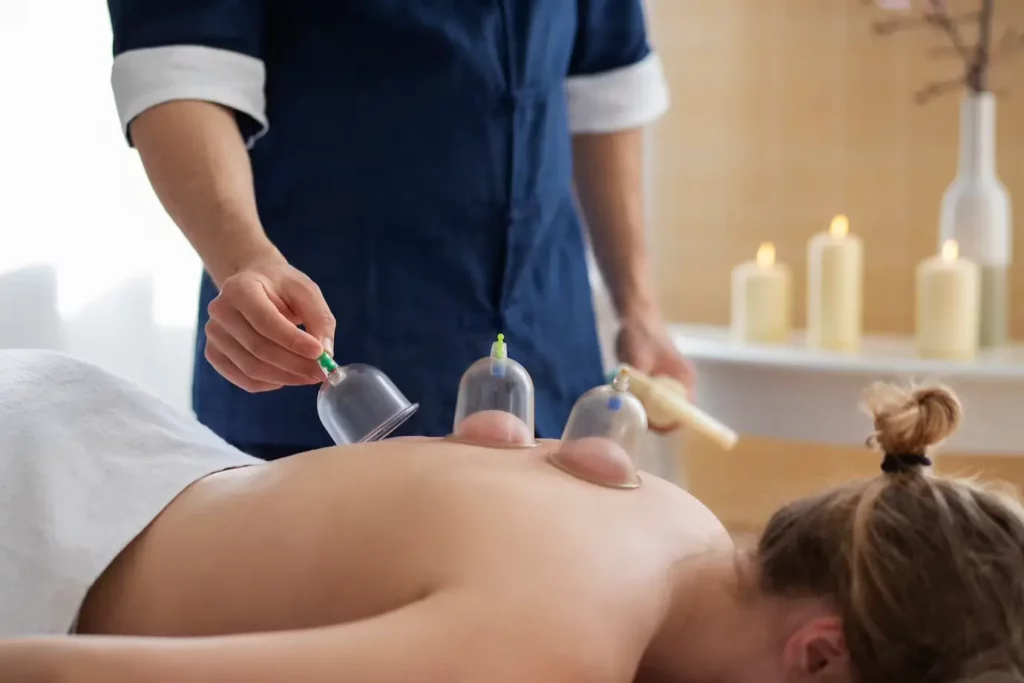
What to Avoid After Cupping?
After cupping, it’s important to avoid the following activities to ensure the best results and minimize the risk of complications:
- Exposure to Extreme Temperatures. Avoid exposing the cupped areas to extreme temperatures, such as very hot baths, saunas, or ice-cold packs. The skin may be more sensitive after cupping care, and subjecting it to extreme temperatures can cause irritation or even burns.
- Vigorous Physical Activity. Refrain from engaging in intense physical activities or exercises immediately after cupping. The suction from the cups may cause temporary bruising or tenderness, and vigorous movements could worsen the marks or slow down the healing process.
- Taking Hot Showers. While maintaining good hygiene is crucial, it’s advisable to avoid hot showers or soaking in hot tubs right after cupping. Opt for lukewarm water instead to prevent any discomfort or irritation to the cupped areas.
- Alcohol and Caffeine. After cupping, it’s recommended to avoid alcohol and excessive caffeine consumption. Both substances can cause dehydration, and adequate hydration is essential for the body to flush out toxins and support the healing process.
- Tight Clothing. Avoid wearing tight or constrictive clothing over the cupped areas, as this can increase pressure and cause discomfort. Loose and breathable clothing can help provide comfort and allow the skin to breathe.
- Scratching or Rubbing the Marks. The cupping therapy may leave temporary marks on the skin, but avoid scratching, rubbing, or picking at them. Allow the marks to fade naturally without any interference.
- Overexertion. Give yourself some time to rest and avoid overexertion after a cupping session. Let your body recover and adjust to the treatment to achieve the best possible results.
By being mindful of these precautions and avoiding the mentioned activities, you can promote a smoother healing process and fully enjoy the benefits of cupping therapy.
Read Also: Top 10 Benefits of Acupuncture
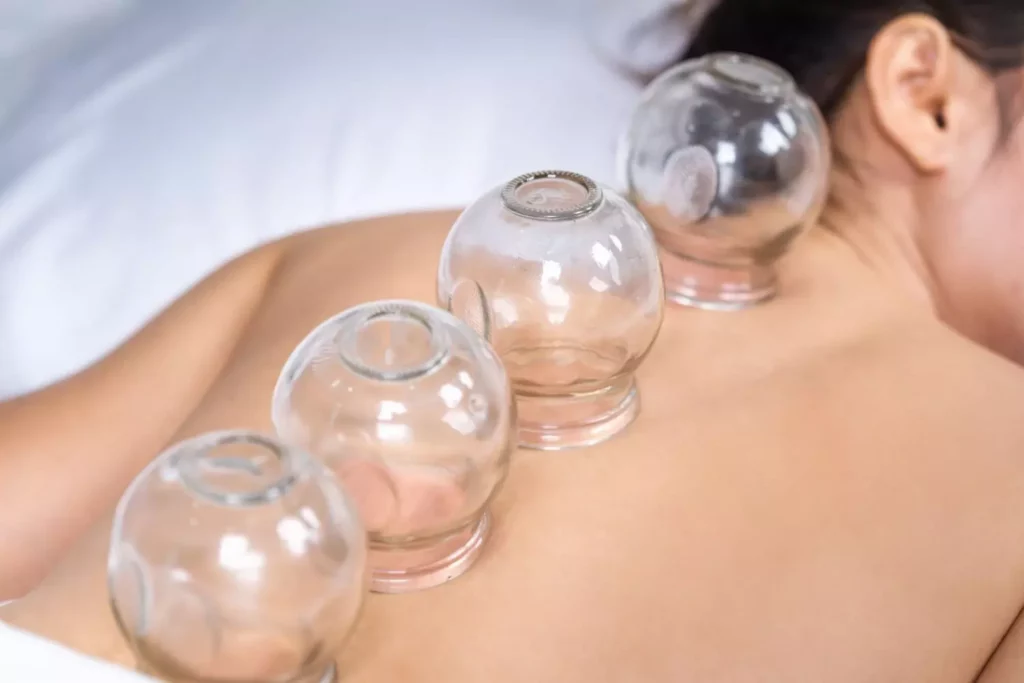
How Long Do Cupping Marks Last?
Cupping therapy leaves distinctive circular discolorations, known as cupping marks, on the skin. The duration of these marks varies based on several factors:
- Skin Sensitivity: Individuals with sensitive skin might notice that the marks linger longer.
- Intensity of Suction: Stronger suction leads to deeper coloration, prolonging the appearance of the marks.
- Body Response: Different bodies react differently to cupping, affecting the healing time.
- Health Conditions: Certain health conditions can lead to prolonged visibility of these marks.
Typically, cupping marks can last from a few days to a couple of weeks, gradually fading as they heal.
Read Also: What does Aromatherapy do to Help You Feel Better?
How to Make the Cupping Marks Go Away Faster
To accelerate the fading of cupping marks, consider the following:
- Stay Hydrated: Drinking plenty of water helps to flush out toxins and aids in healing.
- Gentle Massage: Light, circular massage around the cupped area can increase blood flow and facilitate the fading of marks.
- Topical Treatments: Applying aloe vera or vitamin E oil can soothe the skin and promote healing.
- Avoid Sun Exposure: Protect the cupped areas from direct sunlight to prevent further skin irritation and promote faster healing.
- Balanced Diet: Eating foods rich in vitamins and minerals supports skin health and recovery.
Proper care, including hydration, gentle skin care, and avoiding direct sunlight, can speed up the fading process. It’s important to follow the guidelines provided by your cupping therapist for optimal results.
Ensuring a Safe Cupping Experience
To make sure your cupping experience is positive and the duration of your cupping marks is within the expected timeframe, follow these guidelines:
- Seek a Certified Professional: Always have cupping done by a certified therapist who can tailor the suction to your needs and skin type.
- Aftercare: Follow any aftercare instructions provided by your therapist, such as staying hydrated and avoiding intense exercise immediately after the session.
- Monitor Your Skin’s Response: Keep an eye on how your skin reacts post-therapy and report any prolonged or unexpected changes to your therapist.
Read Also: What does cupping do for your back?
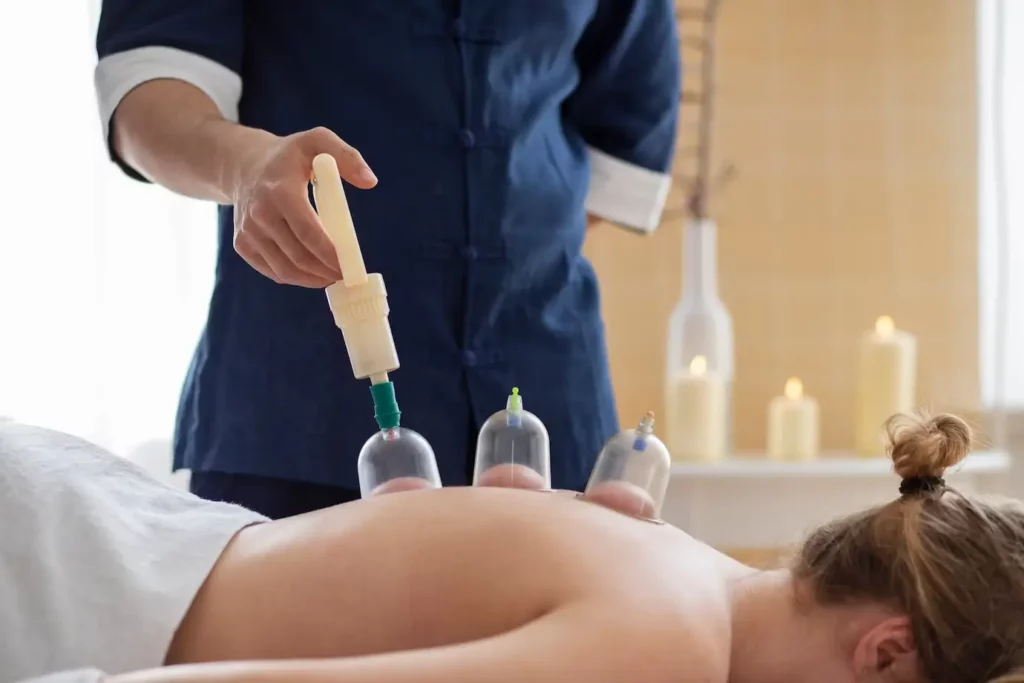
Cupping Therapy Side Effects
Cupping therapy is generally safe and side effects are rare, but it’s not unusual to experience some after your session. There are the most frequent aftereffects observed:
- Exhaustion: Post-cupping sessions, it’s common to feel a sense of exhaustion or an urge to sleep. This is a normal response, indicating your body’s need for rest. Respecting these signals and allowing yourself to relax is crucial for recovery.
- Headaches: Temporary headaches are a known response to cupping therapy. These headaches are usually mild and tend to resolve within a short period. It’s advised to avoid taking medications immediately, as they might hinder the body’s natural healing process.
- Muscle Soreness: Similar to the sensation experienced during a flu, you might notice mild muscle soreness after undergoing cupping. To ease this discomfort, consider gentle stretches or applying heat through a heating pad.
- Lightheadedness: Feeling dizzy or lightheaded post-session is a known reaction. In such cases, it’s important to avoid driving immediately and allow your body time to stabilize.
Understanding the Reasons Behind Cupping Side Effects
Understanding the reasons behind cupping therapy side effects highlights the body’s natural healing response to the therapy. Exhaustion signals a need for rest as energy is redirected towards recovery. Headaches and muscle soreness indicate the release of toxins and the start of tissue repair, respectively. Lightheadedness may occur due to shifts in the body’s energy or blood pressure changes. These side effects, while generally mild, underscore the therapy’s impact on promoting healing and balance within the body. Recognizing these responses can aid in a smoother recovery process, emphasizing the importance of listening to one’s body post-therapy.
Strategies for Easing Post-Cupping Symptoms
To ease post-cupping symptoms, apply a cool compress to reduce inflammation, stay hydrated to help detoxify, and engage in gentle movements to improve circulation. Avoid direct sun exposure and extreme temperatures for 24 hours after treatment to prevent irritation. The most effective approach to alleviate these symptoms is simply giving time, as these reactions are usually transient and part of the body’s detoxification process. This care strategy not only minimizes discomfort but also facilitates a smoother healing journey.
Experience Cupping at Pulse Acupuncture
Experiencing cupping therapy at Pulse Acupuncture Center, which offers a unique opportunity to benefit from this ancient healing practice of wet or fire cupping in a professional and nurturing environment. With a highly skilled acupuncturist and a commitment to holistic well-being, the center ensures a comprehensive and personalized cupping session.
At Pulse Acupuncture Center in Williamsburg, Brooklyn or in Clifton, New Jersey, the cupping experience begins with a thorough consultation, where the practitioner assesses your specific health concerns, medical history, and goals for the treatment. Based on this assessment, they tailor a cupping therapy plan that aligns with your individual needs and Qi pattern. Also practitioner tells the patient what not to do after cupping.
During the session, the experienced practitioner applies the cups to specific areas of your body, creating a gentle suction effect that promotes circulation, relieves tension, and stimulates the body’s natural healing responses. The treatment is generally painless, and many people find it relaxing and rejuvenating.
The compassionate and attentive staff at Pulse Acupuncture Center prioritizes your comfort and well-being throughout the entire cupping session. Marina Doktorman L.Ac. provides a tranquil and serene atmosphere, allowing you to fully unwind and embrace the therapeutic benefits of the treatment. After the cupping session, the practitioner asks how the patient is feeling and, based on the response, makes recommendations for post-cupping care and tells what to avoid to optimize recovery.
What Not to Do After Cupping – FAQ
How Long Does Cupping Marks Last?
Cupping marks typically last anywhere from a few days to two weeks, depending on the individual’s skin type and the intensity of the cupping treatment. These marks usually fade gradually as the body reabsorbs the localized bruising caused by the suction.
How to Make the Cupping Marks Go Away Faster?
– Hydrate: Drink plenty of water to help detoxify your body.
– Nutritious Diet: Consume foods rich in skin-healing vitamins and minerals.
– Gentle Massage: Lightly massage around the marks to boost circulation.
– Avoid Heat: Stay away from direct sunlight and heat sources.
– Moisturize: Keep the skin hydrated with a gentle moisturizer.
These steps can help accelerate the fading of cupping marks.
Can I Workout The Day After Cupping?
It’s generally advisable to wait at least 24 to 48 hours before engaging in any vigorous physical activity. This waiting period allows your body to recover from the cupping session and helps prevent any unnecessary strain on the cupped areas.
How Do I Care for My Skin After Cupping?
Cupping aftercare is crucial for healing and comfort. Here are some tips:
– Keep the area clean and dry to avoid infection.
– Apply mild, hypoallergenic moisturizers if the skin feels dry, but avoid any harsh chemicals or scented products.
– Protect the area from direct sunlight to prevent further irritation and to help the marks fade more evenly and quickly.
-

Marina Doktorman, M.S., L.Ac., is an experienced acupuncturist who obtained her Masters of Acupuncture from the Tri-State College of Acupuncture in New York City in 2001. During her studies, she focused on Chinese Herbology, a branch of Traditional Chinese Medicine (TCM) that utilizes herbs to complement acupuncture treatments. Marina is licensed in both New York (NY) and New Jersey (NJ) and holds a Diplomate of Acupuncture from the National Certification Commission for Acupuncture and Oriental Medicine (NCCAOM), indicating her expertise in the field.

